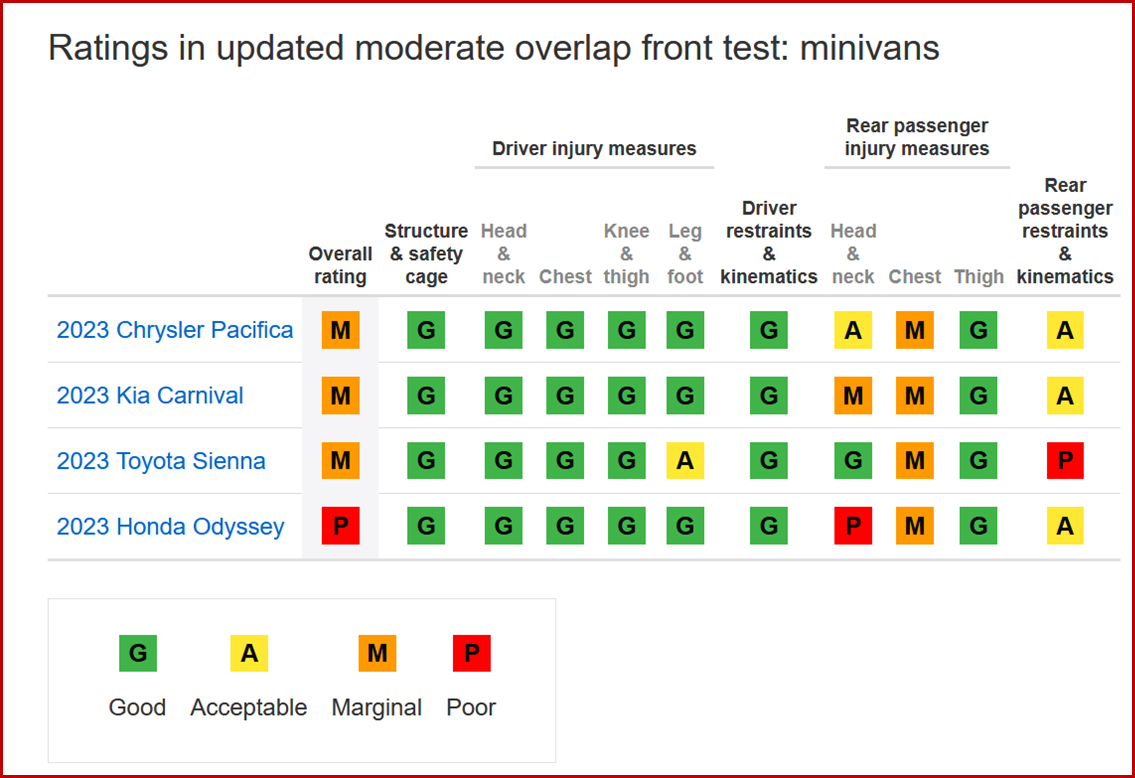Click for more information.
IIHS started the updated moderate overlap front test last year after research showed that in newer vehicles the risk of a fatal injury is now higher for belted occupants in the second row than for those in front. This is not because the second row has become less safe. Rather, the front seat has become safer because of improved airbags and advanced seat belts that are rarely available in back.
In the newer test, a second dummy is positioned in the second row behind the driver. The driver dummy is the size of an average adult man. The rear dummy is the size of a small woman or 12-year-old child. IIHS researchers also developed new measurements that focus on the injuries most frequently seen in back seat passengers.
For a vehicle to earn a good rating, there can’t be an excessive risk of injury to the head, neck, chest or thigh, as recorded by the second-row dummy. The dummy should remain correctly positioned during the crash without “submarining,” (sliding forward beneath the lap belt), which increases the risk of abdominal injuries. The head should also remain a safe distance from the front seatback and the rest of the vehicle interior, and the shoulder belt should remain on the shoulder, where it is most effective. A pressure sensor on the rear dummy’s torso is used to check the shoulder belt position during the crash.
As in the original test, the structure of the occupant compartment must maintain adequate survival space for the driver, and measurements taken from the driver dummy shouldn’t show an excessive risk of injuries. All four minivans provide good protection in the front seat. But each is plagued by multiple issues when it comes to the second row.


